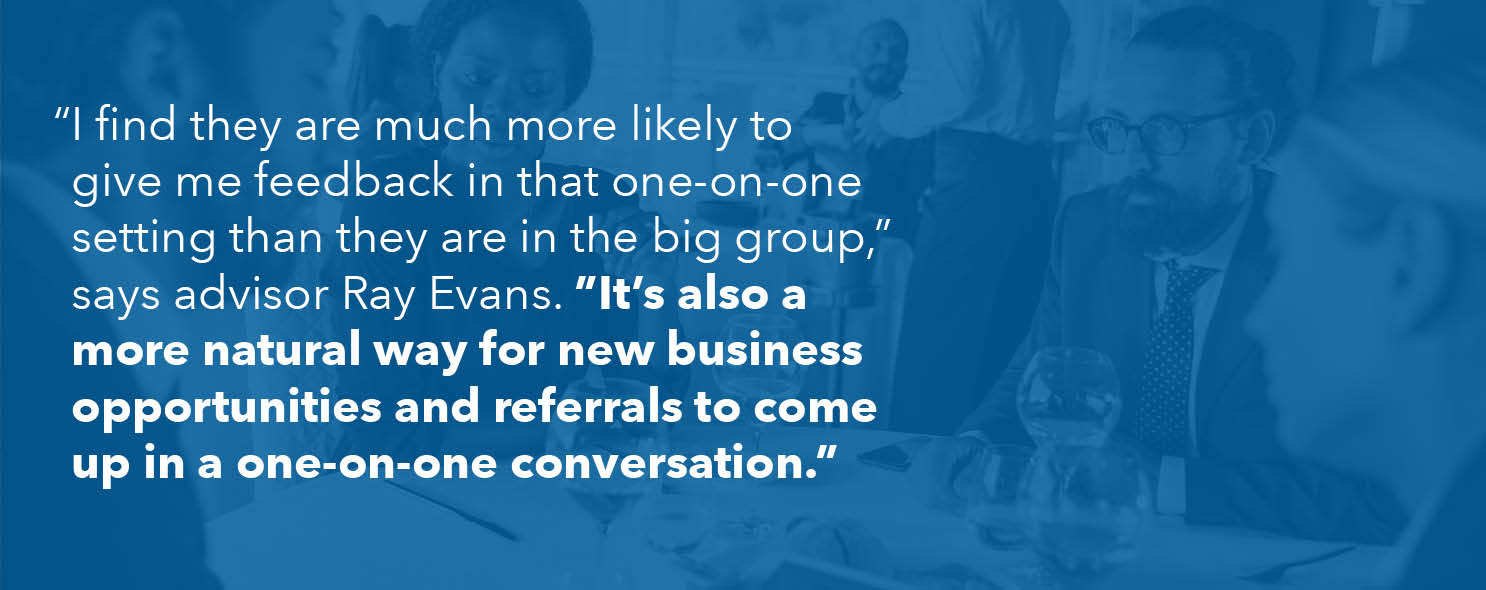As a financial professional, you know how to help clients navigate the best paths to reach their financial goals. But that focus can leave little time for staying on top of shifting trends that can affect your business or getting insight and advice to help keep your practice competitive.
One solution is to establish an advisory board: a group of professionals either outside or inside your profession, who can help you fill in gaps of knowledge, offer insight on new markets and industries, and highlight changing demands of current clients — not to mention act as an important source of business development and client referrals.
The goals, membership and management of advisory boards can be as varied as the financial professionals who host them. Here are examples of how three teams are leveraging advisory boards, and the five steps you can take to create an advisory board of your own.



.jpg)
